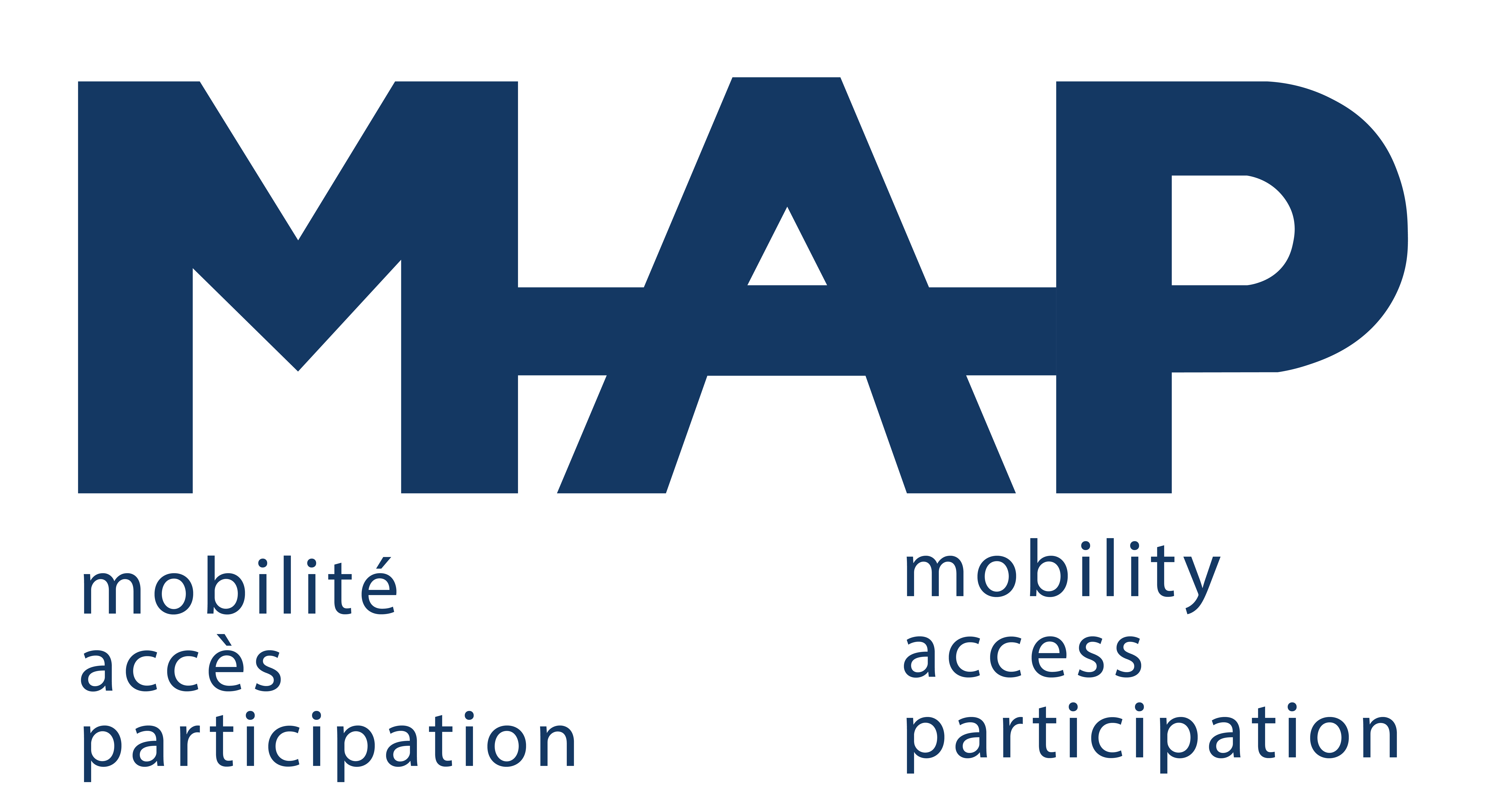Burnaby Community Forum – Urban Accessibility: Promoting Inclusive Environments
Authors: Jason Fan, Samna Sadaf Khan, Sarah Sikder
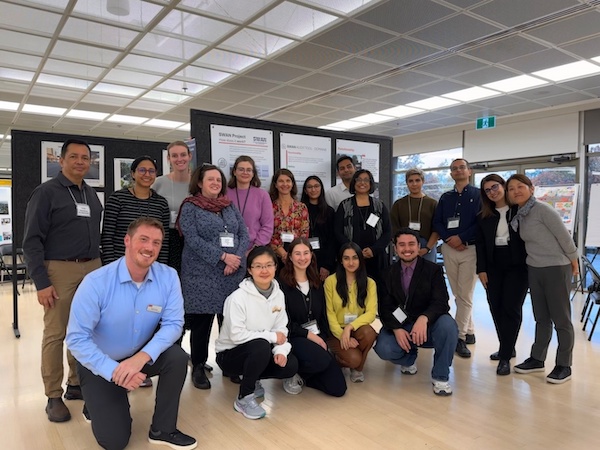
On October 18th, a community forum on urban accessibility was held at the Bonsor Recreation Complex in Burnaby, BC. This event was organized by the MAP-SWAN team, Project Sidewalk, DemSCAPE, SFU Centre for Dialogue and SFU Civic Innovation Lab, in collaboration with Happy Cities.
SWAN, the “Stakeholders’ Walkability/Wheelability Audit in Neighborhoods,” is a sub-project of the “Mobility, Accessibility, and Participation of People with Disabilities (MAP)” partnership, under the Navigation and Pedestrian Environment stream. MAP partners with community organizations and municipalities to address research questions focused on creating accessible communities. Within this framework, SWAN is a user-led audit tool designed to assess both objective and subjective aspects of the built environment that impact older adults, people using mobility assistive devices, those who are deaf or hard of hearing, and individuals with mild cognitive impairments, including dementia. The tool collects feedback on street features such as curb ramps, sidewalks, traffic signals, and crosswalks. The project is conducted in six municipalities of Metro Vancouver: Vancouver, Burnaby, Richmond, North Vancouver, Surrey, and New Westminster, with this forum being part of the study in Burnaby.
The community forum consisted of a morning session featuring a World Café and an afternoon experiential Pop-Up Event. The World Café, a focused discussion group, brought together community stakeholders, researchers, and people with lived experience to engage in conversations about urban accessibility. In the afternoon, the open to public Pop-Up event offered an interactive experience aimed at knowledge mobilization.
World Cafe

The session kicked off with a presentation by the organizing teams, followed by breakout discussions to get everyone actively involved. Around 40 participants were split into five groups, each bringing together people from different fields— city planners, city councilors, disability advocates, researchers, and people with lived experience. The discussions at each table were facilitated by the research team to ensure meaningful conversations about accessibility and barriers affecting the daily lives of people with mobility, sensory, and cognitive disabilities.
To help guide the conversations, participants used printed materials, photographs of city sidewalks, flip charts, and post-it notes, making it easy for everyone to contribute and share their ideas. The groups engaged in dialogue about the accessibility challenges they face, with a particular focus on improvements needed for sidewalks, curb cuts, crosswalks, and other key pedestrian infrastructure to make Burnaby’s urban spaces more accessible for all.
Emergent Themes
The table discussions at the word café led to key focus areas, with the following points reflecting broad themes. However, the recommendations listed below are not exhaustive.
- Sidewalk Accessibility and Design: While street furniture, light poles, trees, and sandwich boards are beneficial features, the participants noted they become an obstacle with limited sidewalk width. There is even more difficulty during the construction zones, which despite having alternate pedestrian plans, are not suitable for people with cognitive disability. Combining bike lanes with sidewalks also raised safety concerns.
- Upgrade Crosswalks and Traffic Signals: The discussion noted features that work well in some municipalities, such as audible pedestrian signals, and emphasized the need for regional standardization. Participants also recommended extending crossing times, longer crosswalks, and addressing uneven surfaces and misaligned curb cuts to improve safety and walkability.
- Transit Infrastructure: Lack of or few benches were seen as a challenge for older adults on transit stops. Thus, it was recommended to increase seating as well as improve signage for easier identification and prioritize timely repairs of malfunctioning elevators in sky train stations.
- Improvement in Signage: Wayfinding and signage were important for people with cognitive disability not only at transit stops but also in the case of buildings. The participants discussed the options regarding fonts, high-contrast colors, visual and tactile cues.
- Accessibility of Buildings and Urban Features: Lack of automatic or contactless push-button doors also reduces the accessibility of various buildings for people with disabilities. Furthermore, standards for bathroom design, furniture design in food courts and restaurants and high-rise housing design which promotes social interaction were of significant value to the participants.
- Promote Inclusion: People with lived experience must have a greater role in design and policy decisions. To address digital inequity, we need to create more accessible options for those with limited access to smartphones or the internet
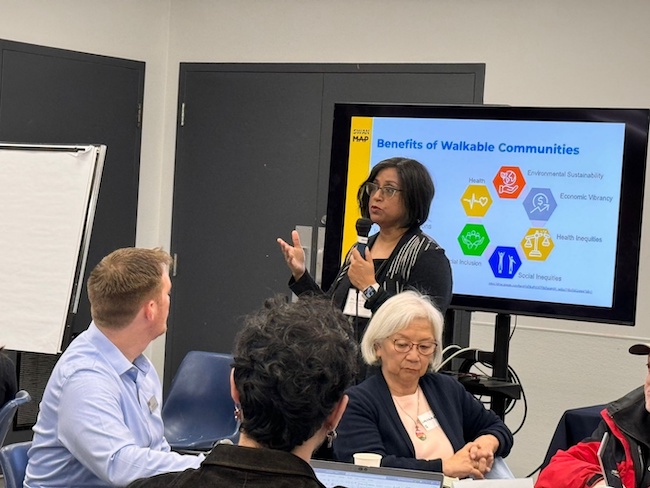
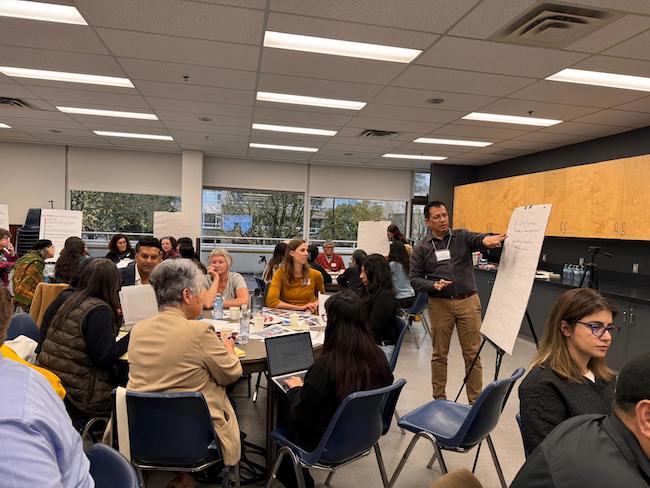
Experiential Pop up
The afternoon session was designed to make civic education and knowledge sharing truly meaningful through community engagement, so it was a family-friendly event open to the public. There were five interactive stations for participants to explore and connect with.
“On the Move” Video Station
This station featured the stories of individuals with diverse abilities as they navigate their communities. The attendees found it useful to understand the key barriers and possible solutions for creating more inclusive public spaces.

Photoboard Display
Here, the public viewed a visual comparison of accessible and inaccessible streetscapes through photos. The display encouraged people to think about what makes a space truly accessible and share ideas for improvement.
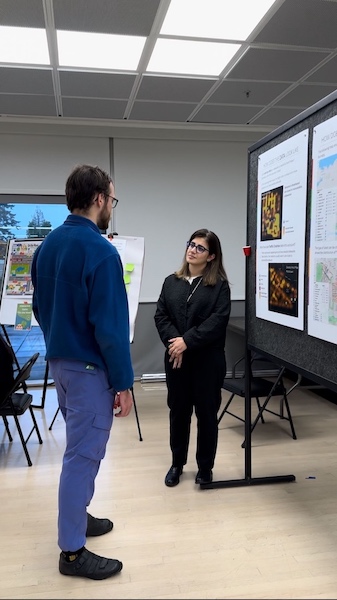
Interactive Game “On the Move”
This station was a popular spot where participants played a board game created by the MAP-SWAN team. The game highlighted the challenges people with disabilities face in urban environments. It was a fun and engaging way to raise awareness about daily mobility obstacles and inspire creative ideas for improving urban design.
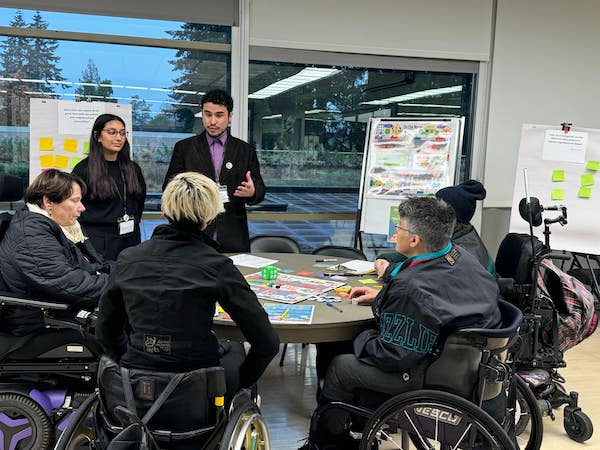
DemSCAPE Project
At this station, participants met with researchers from the DemSCAPE project, learning how the initiative aims to identify neighborhood features that impact the mobility of people living with dementia. The project also focuses on developing tools to assess environments that are supportive of individuals with dementia.
SFU Morris J. Wosk Centre for Dialogue: Community Assemby’s Accessibility Recommendations
This station discussed the Burnaby Community Assembly’s recommendations for the Burnaby 2050 Official Community Plan, and how accessibility can help to create a city where everyone can thrive. Participants shared their ideas on measures the city can take to improve accessibility by 2050.
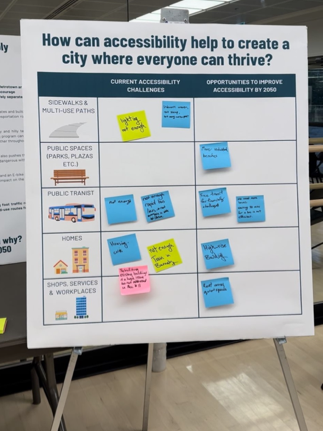

The community forum was an important event for the city of Burnaby, serving as a bridge between research, practitioners, and the community. With the experience of people living with different abilities often being marginalized, ensuring their opinions and experiences are heard is paramount. By fostering open dialogue, the forum increased visibility and understanding of accessibility challenges, while empowering participants to have a say in the decisions that affect their lives, neighborhoods, and cities.
To ensure open dialogue is maintained, the SWAN team is continuing to explore different methods of equitable knowledge mobilization. This includes the continued promotion of the On the Move game board and video to various stakeholders in cities across metro Vancouver. Furthermore, the SWAN team is collecting data from Persian speaking older adults to ensure the unique mobility challenges faced by ethnic older adults are not further marginalized.
Looking Ahead
While the community forum was able to forester collaboration and dialogue between community stakeholders and people with lived experiences, there is still more work to be done. People living with different abilities should not have to rely on these events to get their voices and concerns heard by decision makers. The SWAN team envisions a future where people living with different abilities can actively collaborate with decision makers in developing an inclusive and accessible neighborhood environment.

